Baby, you can’t drive these cars
June 24, 2010
Ah, that old car smell. Step inside the anonymous-looking Gardena warehouse and breathe it in: History. Glamour. Prestige. And a big ol’ steam-powered tractor, complete with dirt-encrusted tires, that Hollywood’s Edgar Bergen drove around his orange grove in the San Fernando Valley.
Stashed away in this unlikely location is one of the country’s most intriguing collections of 75 vintage vehicles, owned by what may seem like an equally unusual collector—the County of Los Angeles.
The county-run Natural History Museum came into possession of the cars when it parted ways with the Petersen Automotive Museum in 2007 as part of a divvy between the two. The Petersen, now a private non-profit institution, kept cars that had been given to its foundation over the years, while the Natural History Museum kept those that had been given to the county by such benefactors as Bergen’s widow, who donated the tractor.
The county collection has been largely off the general public’s radar, although experts and researchers use it heavily and individual cars have been displayed at the Natural History Museum, the Petersen and at other facilities and events.
Now the public is about to get a look. This fall, the museum plans to start offering behind-the-scenes tours one day a month at its Gardena collections facility.
Museum officials also are attempting to refine the collection’s mission—an exercise that includes deciding which vehicles are most important to keep. Their report to the Board of Supervisors is expected by the end of the month.
Will the 1963 Rolls-Royce Silver Cloud III, donated to the county by a Pasadena doctor, make the cut? How about those two rumble seat-equipped Model As? Or the gleaming black 1932 Duesenberg roadster, its imposing body designed at Pasadena’s Walter Murphy coachworks?
Museum officials won’t say which, if any, vehicles may be moving on. But their goal is to focus on vehicles that have a story to tell about Los Angeles and California—especially those that remain in authentic, unrestored condition, with their “cultural DNA intact,” in the words of John Long, the museum’s vice president for research and collections.
“A lot of our cars aren’t wonderfully polished and looking like they’re straight off the showroom floor,” he says.
Some are, of course—like a bright yellow 1927 McFarlan roadster. “It’s totally historically inaccurate, but it’s a gorgeous piece of eye candy,” says the museum’s collections manager, Beth Werling.
The current belle of the garage, however, is an exceptionally rare 1908 Pierce Great Arrow touring car made in Buffalo, N.Y., once owned by the wife of the editor of the San Francisco Examiner. It’s massive and imposing, even regal, with gold monograms on its wine-red doors.
The vehicle is said to be the only one of its kind in original, unrestored condition—something that auto connoisseurs find interesting these days, it turns out.
The Great Arrow’s been invited to participate in the Concours d’Elegance car exhibition in Pebble Beach in August, where Pierce cars will be a particular focus.
“The Concours d’Elegance is the most prestigious car show in the world right now,” Werling says. “Being invited is like being nominated for an Oscar.”
The Concours selection committee is even footing the bill for transporting the car to and from Pebble Beach. “It’s a magnificent car,” says Martin E. Button, who’s on the selection committee and whose company, Cosdel International Transportation, specializes in the import and export of collector cars from around the world.
“It is the only one that is unrestored and in original condition—which is really important…I have a 1909 Pierce Arrow that’s not nearly as rare as this.”
And one of these years—maybe this one—an unrestored car may win big at the Concours.
“We’ve never had an unrestored car win Best of Show, but everybody wants it to happen,” Button says. “We’d love to see that.”
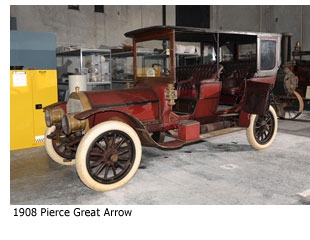 In order to have a shot at rolling over the ramp to a moment of glory in front of the Lodge at Pebble Beach, a car has to actually be drivable, which presents a bit of a problem. The Great Arrow, which was running in 1998 when it previously was exhibited at Pebble Beach as part of the Petersen’s collection, now has a gummed-up carburetor. It’s on its way to a specialty mechanic.
In order to have a shot at rolling over the ramp to a moment of glory in front of the Lodge at Pebble Beach, a car has to actually be drivable, which presents a bit of a problem. The Great Arrow, which was running in 1998 when it previously was exhibited at Pebble Beach as part of the Petersen’s collection, now has a gummed-up carburetor. It’s on its way to a specialty mechanic.
“We’re scrambling to find funding to get it up and running,” Werling says. “We’re not sending it to Pep Boys.”
Werling, who has degrees from Stanford and NYU, also manages Natural History Museum collections ranging from jewelry (“We have Pio Pico’s rosary”) to aircraft (“We have a glider and we have a bi-plane.”) Her previous professional experience with vehicles was limited to tractors at an agricultural museum in Arkansas.
“It’s been a big new world,” she says. “It’s a very complex artifact to take care of.”
As she moves through the collection, Werling points out two types of cars with California links. For some, the connection is obvious—they were made here during the city’s early 20th century burst of automotive entrepreneurial spirit. In this category are the two 1902 Tourists, for example, made by downtown L.A.’s once dominant Auto Vehicle Company.
Then there’s the second category—cars made elsewhere but that reflect something about the California people who made or used them.
Take, for example, the butter yellow 1953 Cadillac Eldorado, to be displayed as part of the museum’s multifaceted Southern California history exhibit “Under the Sun” when it debuts in 2012. The car’s design is the work of the legendary Harley Earl, who was born and raised in Hollywood and went on to fame as head of General Motors’ style department. He got his start in his father’s Earl Automotive Works in Los Angeles, going on to create showy vehicles for Silent Era film stars before Detroit lured him away.
Like the Cadillac, other vehicles have ties to an earlier Los Angeles, a time when local road races became fodder for the era’s moviemakers. The museum’s 1915 Stutz White Squadron Race Car (currently on loan to the Petersen) appeared in an early movie in which a real racecar driver, Earl Cooper, played the love interest to Mabel Normand.
A Jaguar 1954 XK-120 coupe in the collection speaks to Los Angeles’ emergence as a sports car capitol after World War II. “We had the roads that you could drive them on,” Werling says. Those images reached the rest of the country—and the world—by way of Hollywood movies. And the rest, as they say, is history.
When it comes to the stories behind the cars, it’s hard to beat the jaunty red1904 Franklin that staged one of the first cross-county road trips—with Pasadena mechanic Lester Whitman at the wheel—and later survived the San Francisco earthquake. After the quake, as fires raged, the plucky vehicle helped ferry survivors across the bay to Oakland, losing its wicker basket trunk to burning embers in the process.
Now it’s time to present those stories—and the collection as a whole—to the public.
“They’ve got some great cars down there, they really do,” says Button, of the Pebble Beach Concours d’Elegance selection committee. “You have some wonderful cars and I think they’re a real attraction. I just think it’s a real shame to have cars stashed away.”
Focusing on “preservation cars” like the Pierce Great Arrow might be a good niche to develop as the museum refines its collection. “There are no museums that do that,” Button says. “One of the sayings we have, and you can quote it, is: You can’t restore originality.”
By the way, don’t expect any cross-town rivalry from Leslie Kendall, curator of the Petersen Automotive Museum, who says he’d welcome the opening of the Natural History Museum’s collection to the public for tours.
“I can’t get enough,” Kendall says. “I love the idea that there’d be another place I could see great cars.”
Photos by Scott Harms/Los Angeles County
Posted 6/24/10
An evening with Christopher Hitchens
June 24, 2010
THIS EVENT HAS BEEN CANCELLED! For personal reasons, Christopher Hitchens has regretfully been forced to cancel his trip to Los Angeles.
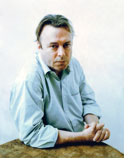 Pundit and provocateur Christopher Hitchens returns to L.A. to discuss his recently published memoir “Hitch-22” on Monday, June 28 at 8:00 PM at the Aratani/Japan America Theatre in Little Tokyo. It’s all part of the “Aloud” reading and lecture series presented by the Library Foundation of Los Angeles, supporting the city’s Public Library.
Pundit and provocateur Christopher Hitchens returns to L.A. to discuss his recently published memoir “Hitch-22” on Monday, June 28 at 8:00 PM at the Aratani/Japan America Theatre in Little Tokyo. It’s all part of the “Aloud” reading and lecture series presented by the Library Foundation of Los Angeles, supporting the city’s Public Library.
Hitchens began his political journey as an ardent socialist and budding revolutionary in the 1960s, but his commitment to human rights, even when it means supporting unpopular wars, eventually alienated him from the traditional Left. He also is known for his unyielding antipathy toward all organized religion and relentless contrarianism. A famously prolific writer, he is the author of 10 books and hundreds of articles and essays. His politics today defy conventional classification, but he has been widely praised for his wit, erudition and powerful polemical style – all of which are on full display in his frequent public appearances in the media and on stage.
The Aratani/Japan America Theatre is located at 244 South San Pedro Street in downtown Los Angeles. Order your tickets online, and here is information on parking and directions.
Posted 6/24/10
“Thurgood” comes to the Geffen Playhouse
June 24, 2010
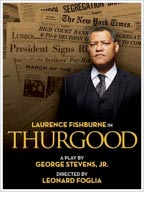 Thurgood Marshall was a towering figure in American jurisprudence, the first African American to serve on the Supreme Court. He was born in Baltimore as the son of a railway porter and steward at a whites-only country club, and grandson of a slave. Despite having graduated with honors from Pennsylvania’s Lincoln University, Marshall initially was rejected on racial grounds from entering the University of Maryland Law School. He enrolled instead at Howard University Law School, graduating first in his class in 1933. A brilliant legal career soon followed, beginning with a short stint in private practice before Marshall joined the National Association for the Advancement of Colored People (NAACP) as a staff lawyer, quickly rising by 1940 to head up the NAACP Legal Defense and Educational Fund. He went on to win 29 of the 32 cases he argued before the Supreme Court, including the landmark 1954 Brown vs. Board of Education decision that overturned the Court’s longstanding “separate but equal” doctrine dating from 1896. Appointed to the Supreme Court in 1967 by then-President Lyndon Johnson, Marshall served with distinction until his retirement in 1991. He died in 1993 at the age of 85.
Thurgood Marshall was a towering figure in American jurisprudence, the first African American to serve on the Supreme Court. He was born in Baltimore as the son of a railway porter and steward at a whites-only country club, and grandson of a slave. Despite having graduated with honors from Pennsylvania’s Lincoln University, Marshall initially was rejected on racial grounds from entering the University of Maryland Law School. He enrolled instead at Howard University Law School, graduating first in his class in 1933. A brilliant legal career soon followed, beginning with a short stint in private practice before Marshall joined the National Association for the Advancement of Colored People (NAACP) as a staff lawyer, quickly rising by 1940 to head up the NAACP Legal Defense and Educational Fund. He went on to win 29 of the 32 cases he argued before the Supreme Court, including the landmark 1954 Brown vs. Board of Education decision that overturned the Court’s longstanding “separate but equal” doctrine dating from 1896. Appointed to the Supreme Court in 1967 by then-President Lyndon Johnson, Marshall served with distinction until his retirement in 1991. He died in 1993 at the age of 85.
Laurence Fishburne brings Marshall to life once again when he recreates his Tony-nominated Broadway role for the Geffen’s new West Coast production of the George Stevens, Jr. play. At only 95 minutes in one act, it’s kid-friendly, too, offering an accessible and inspiring introduction to one of the most acclaimed and influential figures of our time. The Geffen Playhouse is located in Westwood Village at 10886 Le Conte Ave. in Westwood Village. Here’s the full rundown on all of this season’s productions, along with a seating chart and how to purchase tickets.
A neon jungle cruise through downtown L.A.
June 23, 2010
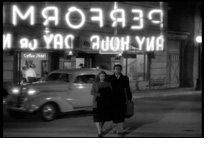 Starting Saturday, June 26, and continuing weekly thereafter through mid-November, the Museum of Neon Art’s award-winning summertime tradition returns with Neon Cruise 2010.
Starting Saturday, June 26, and continuing weekly thereafter through mid-November, the Museum of Neon Art’s award-winning summertime tradition returns with Neon Cruise 2010.
The revels begin at 7:30 p.m. with a wine-and-cheese reception at MONA, located downtown at 136 W. 4th St., between Main and Spring streets. Once urban explorers have sampled the drinks – and the displays – the adventure continues at 8:00 p.m. with a guided British double-decker bus tour by urban anthropologist Eric Lynxwiler, featuring the finest in neon displays from the Broadway Theatre District through Chinatown and Hollywood, concluding downtown where it all began by 11:00 p.m.
Neon signs have decorated the sets of thousands of films and TV programs over the decades, instantly establishing a moody atmosphere of seediness and despair for countless cop shows and murder mysteries. But neon is much than a backdrop, and for nearly 30 years, MONA has dedicated itself to showcasing the finest in neon sculpture and signage, preserving the old and curating showings of the new.
Tickets for the 2010 Neon Cruise are $45 for members and $55 for nonmembers; for further information, call (213) 489-9991. But whether you’re along for the ride or just dropping by for a visit, the experience will shed a little light on this overlooked and underappreciated 20th century art form. To get there, the Metro Trip Planner offers handy public transit options, or you can use these driving directions.
Posted 6/23/10
A new way to dam pollution
June 23, 2010
In a bid to improve water quality at a popular beach, Los Angeles County Public Works engineers will deploy an unusual weapon: a large, inflatable rubber dam.
The device, measuring 37 feet long and 4 feet high when inflated, will be used during the dry season in the Santa Monica Canyon storm drain to keep dirty water from flowing into the ocean at Will Rogers State Beach. The result, according to Bruce Hamamoto of the Department of Public Works: “There will be less bacteria at the beach.”
The rubber dam, scheduled to be installed in 2011, will replace an existing system that sends bacteria-laden water through sewers and into the City of Los Angeles’ Hyperion treatment plant near LAX, where harmful bacteria are removed. The new system will give water officials more flexibility to increase the amount of dirty water diverted to Hyperion.
Although rubber dams have been used by the county to help manage groundwater storage, this is the first use of a large dam along the coast to fight water pollution. (A small rubber dam was installed at the new Marie Canyon facility in Malibu last year.)
The rubber dam, essentially an inch-thick inner tube, allows officials to capture dirty water that would, on occasion, breach an existing 15-inch concrete dam, built in 2003. Now, when the water gets higher, the rubber dam can be inflated up to four feet high to divert more of the flow to Hyperion. Conversely, officials can deflate the rubber dam during storms to send water directly into the ocean and avoid flooding.
The $2 million dam, approved by the Board of Supervisors last month, represents the county’s portion of a joint project with the City of Los Angeles. The city will spend $6 million to double the size of the pipes that divert water through the sewers to Hyperion.
The dam project is part of a broader county effort to improve water quality at L.A.’s beaches by bringing pollution levels below those set by state environmental regulators.
More than 3 million gallons of water flow through the Santa Monica Canyon Channel on the average “dry season” day. Much of the water comes from the irrigation of lawns and gardens across a 10,000-acre swath of the Westside.
Post 6/23/10
L.A.’s great smoking divide
June 22, 2010
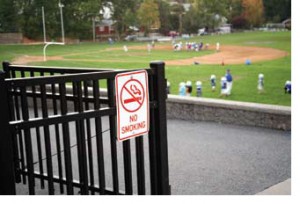 Folks in San Marino, Malibu and Calabasas can breathe easy.
Folks in San Marino, Malibu and Calabasas can breathe easy.
But for those of you in Quartz Hill, Lancaster and West Hollywood—don’t throw away the nicotine patches just yet.
A new public health report on smoking in L.A. County is out, and it’s naming names. The report is the first of its kind to break out the county’s adult smoking rates by city and community. The disparities are striking.
San Marino boasts the county’s lowest rate of adult smoking, 5.3%, closely followed by Malibu at 5.8%. Next are La Canada-Flintridge (6.4%) and Calabasas (7.3%.)
“Our people in the community care about health. We care about and talk about healthy lifestyles,” says San Marino Mayor Dennis Kneier. His constituents, he says, “are very educated people who are aware of and conscious of the health risks of smoking.”
At the other end of the spectrum is Quartz Hill in northeast Los Angeles County, where 21.9% of the adult population smokes. Lancaster is next, at 21.7%.
“Coming from a long line of smokers, let me tell you: people up here smoke too much,” says Cindy Brody, a library assistant in Quartz Hill. “I was born here, and it hasn’t changed much in over 50 years. Face it, we’re not Hollywood.”
In West Hollywood, which has the fourth highest incidence of adult smoking in the county (19.6%), a task force of business and community leaders was convened in December to explore a new ordinance that would ban outdoor smoking on restaurant patios, open common areas and service areas such as ATM lines. The measure is expected to be brought before the city council in the next few months. The city already prohibits indoor smoking in public places and workplaces.
The county report draws on 2007 smoking data and population information from the 2000 U.S. Census. Some cities and communities, such as Avalon, Bradbury and Hidden Hills, were too small to be included. In all of Los Angeles County, there are an estimated 1.06 million smokers—14.3% of the adult population. (To see how your community ranks, scroll down to Table 1 of the report.)
Dr. Jonathan E. Fielding, the county’s director of public health, says in a foreword to the report that Los Angeles has one of the lowest smoking rates of any big metropolitan area in the U.S. He credits that to factors such as cigarette tax policy, “aggressive anti-smoking media campaigns” and smoke-free indoor ordinances.
He also reports that smoking among high school-age teens in Los Angeles County has declined dramatically, from 26% in 1997 to 12% in 2005. But smoking rates among adult smokers have remained steady since 2002. In addition to the heavy toll this takes on individuals and families, smoking also contributes to the $4.3 billion that tobacco-related diseases cost the county each year—$2.3 billion of it spent directly on health care.
Fielding said in a statement released with the report that the information is meant to help local leaders develop effective anti-smoking policies. “Understanding where smoking rates are highest in the county allows policy makers to develop support for and establish programs and policies in the fight against tobacco use,” Fielding said. However, the report does not attempt to correlate such policies with smoking rates in individual communities.
L.A. County‘s smoking disparities aren’t just geographic. The report says men smoke more than women, and African Americans light up more than other ethnic and racial groups. People with college degrees and higher incomes tend to smoke less than others.
In Quartz Hill, Brody, 55, thinks her community’s smoking habit can be partly attributed to economics.
“It’s a poor community, nobody has any money and they have nothing to do up here,” she says. She notes that long commuting distances also contribute to high stress levels for many.
Never a heavy smoker, Brody gave up cigarettes some 30 years ago.
“Now if I could get my husband to quit,” she says, “I’d be happy.”
This is the first L.A. County Public Health report to break out smoking rates by city and community. Previously, the department created such reports on childhood obesity and premature deaths from heart attacks and strokes.
Posted 6/22/10
Probation reforms temporarily tabled
June 22, 2010
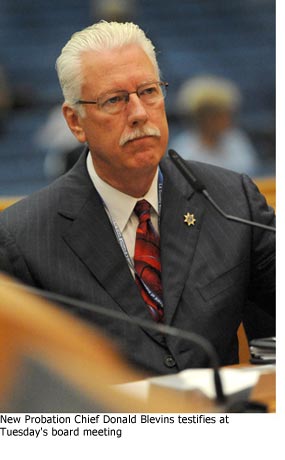 A series of measures aimed at swiftly improving the management and accountability of L.A. County’s scandal-plagued Probation Department was put on hold Tuesday when a short-handed Board of Supervisors could not muster the three votes needed for passage.
A series of measures aimed at swiftly improving the management and accountability of L.A. County’s scandal-plagued Probation Department was put on hold Tuesday when a short-handed Board of Supervisors could not muster the three votes needed for passage.
The matter was delayed a week after Supervisor Mark Ridley-Thomas—one of only three members present—left the board one vote shy by abstaining. Supervisors Zev Yaroslavsky and Gloria Molina, both of whom have been outspoken in their efforts to reform the department, had voted to move the measures forward.
Ridley-Thomas declined Molina’s offer to explain why he abstained at a time when the department is under increasing pressure to quickly restore public confidence. “I don’t know why anybody would object to these…motions,” said Molina, the board chairman. In fact, Supervisor Michael D. Antonovich, who is out of town, had encouraged his board colleagues in an e-mail to press ahead, despite his absence. He called the motions “vital.”
In recent weeks, the 6,000-person department has been rocked by disclosures, including reports that employees used county credit cards to buy electronics goods, that dozens of employees accused of misconduct may escape discipline because the investigations ran too long and that the department cannot fully track $79 million allocated by the Board of Supervisors to hire personnel.
The three motions at issue on Tuesday were intended to provide the department’s newly named chief, Donald Blevins, with ways to increase the effectiveness of his management team and provide tougher oversight of the department’s internal investigations and discipline.
Two of the motions were co-authored by Yaroslavsky. One, written with Antonovich, would expand the responsibilities of the Office of Independent Review to include oversight of the Probation Department. For nearly a decade, the OIR’s work has been largely confined to monitoring the operations of the Sheriff’s Department.
The second motion—this one co-authored with Molina—asks the CEO, County Counsel, personnel officials and others to explore within 30 days how Blevins could, under Civil Service rules, begin hiring managers from outside the Probation Department—a break with current practices.
The third motion, authored by Supervisors Antonovich and Don Knabe, attempts, among other things, to insure that that no employees in the future escape discipline because of unnecessarily long internal investigations and that probation officials responsible for such lapses in the past be held accountable.
At Tuesday’s meeting, Yaroslavsky emphasized that “time is of the essence”—a sentiment that brought agreement from Blevins, the former probation chief of Alameda County. He said he understands the board’s “clear message” that it’s his job “to clean up the department.”
Posted 6/22/10
Before pot vote, consider health impact
June 22, 2010
 With California voters set to decide in November whether to legalize marijuana, Los Angeles County’s top health officer has come up with an analysis of the drug’s effects.
With California voters set to decide in November whether to legalize marijuana, Los Angeles County’s top health officer has come up with an analysis of the drug’s effects.
Dr. Jonathan E. Fielding’s June 8 report to the Los Angeles County Board of Supervisors draws on an array of studies from authorities, including the American Medical Assn. to examine what marijuana does to the health of those who use it medically or recreationally.
“We really tried to be very objective,” said Fielding, the county’s director of public health. He said he was moved to create the report because of a shortage of comprehensive data on the subject.
“There’s a lot of mythology on all sides here,” he said in an interview. “Trying to understand what the science says is often a good first step.”
Fielding’s analysis does not come down on either side of the initiative, but includes statistics about how often marijuana use is a factor in some treatment and hospital settings.
One-third of those admitted to Los Angeles County substance abuse treatment facilities say that marijuana is their primary or secondary drug of choice, the report said. Nationwide, it contributed to 375,000 emergency room visits in 2008.
“Marijuana is a significant public health problem,” Fielding said.
Used medically, though, it may be effective in treating a few conditions, the report found. In addition to treating nerve pain, it also can help combat severe weight loss, alleviate some multiple sclerosis symptoms, fight chemotherapy-related nausea and vomiting and relieve eye pressure from glaucoma.
As for recreational use, Fielding’s report states that marijuana is consistently associated with difficulties in learning and remembering new information, along with lower test scores and decreased levels of academic achievement. Studies also have found that marijuana use correlates to increased consumption of other drugs. But it has not been “consistently associated with other measures of mental and psychological harm,” the report said.
The report, citing national surveys, says that more than 30% of people 18 and older who’ve used marijuana in the past year are classified as dependent on the drug. But that number is greatly reduced when actual “diagnostic criteria” for substance dependence are considered. Under that measure, between 4% and 9% of marijuana users are addicted. Overall, Fielding reported, marijuana users are “considerably less likely to [become dependent] than users of alcohol and nicotine, and withdrawal symptoms are less severe.” Still, younger users face higher risks, with 17% of those who’ve used the drug at age 13 becoming addicted.
Other findings:
- One recent clinical trial involving marijuana smokers had to be halted early when some participants started having suicidal thoughts.
- Marijuana’s association with psychosis is “somewhat controversial.” Although some recent studies suggest an increased psychosis risk associated with marijuana use, “marijuana accounts for only a small proportion of psychoses.”
- Smoking marijuana, like smoking tobacco, has been linked to lung damage and chronic bronchitis. Additional long-term studies are needed to determine whether marijuana smoking leads to an increased risk of lung cancer or other cancers of the oral cavity and airway.
The initiative to legalize, regulate and tax marijuana will appear on California’s November 2 ballot. It would allow people over 21 to grow and possess the drug and would permit local government to regulate and tax its sale. It would prohibit using marijuana in public or when minors are present, and would not allow its possession on school grounds,
Posted 6/22/10
Pushing for change in Probation Dept.
June 17, 2010
Outraged by a continuing stream of revelations, the Board of Supervisors is set to consider two measures aimed at intensifying oversight and accountability in the county’s Probation Department, which has been rocked by financial lapses and management failures.
In recent months, the 6,000-person department has been embarrassed by disclosures that it was unable to account for the expenditure of $79 million dollars allocated by the board, that probation youth had been allowed to conduct videotaped boxing matches in Juvenile camp classrooms and that more than two dozen officers accused of serious misconduct could escape discipline because the investigations exceeded a one-year statute of limitations.
Moreover, it was disclosed this week that the county’s Auditor-Controller has uncovered numerous instances in which Probation employees may have used department credit cards to illegally purchase electronics and other items for personal use. A criminal investigation has been initiated.
“The Probation Department has lost its sense of mission,” concluded Supervisor Zev Yaroslavsky. “The mission became more about them than about the clients they serve.” In an effort to get the department back on track, Yaroslavsky has co-authored two motions scheduled to come before the board on Tuesday.
One, with Supervisor Michael D. Antonovich, would expand the responsibilities of the Office of Independent Review to include oversight of the Probation Department. For nearly a decade, the OIR’s work has been largely confined to monitoring the operations of the Sheriff’s Department. In March, however, the board asked the OIR to examine the Probation Department’s internal investigations. OIR concluded that sweeping reforms were needed. Yaroslavsky and Antonovich are pressing for the OIR to assume those duties.
The second motion—this one authored with Supervisor Gloria Molina—is aimed at giving newly-appointed Probation Chief Donald Blevins greater latitude in assembling a “competent and effective” team of leaders. To that end, the motion asks the CEO, County Counsel, personnel officials and others to explore within 30 days how Blevins could, under Civil Service rules, begin hiring managers from outside the Probation Department—a break with current practices.
This hiring shift is considered crucial for Blevins, who says he is determined to weed out bad managers and reform the agency from top to bottom. In a statement to the media on Wednesday, Blevins warned:
“It is my responsibility to investigate the allegations of fraudulent activities that are said to be taking place and I assure you, those who have violated my trust, will be punished and/or removed from this Department. I have a zero-tolerance for misbehavior within my organization. The standard level that I hold every single employee within this Department is that of professionalism and high personal integrity. If this is too much for any employee to handle, then perhaps they made a poor career choice. These are sworn officers and they must act accordingly.”
For an interview with Blevins shortly after he was hired in April, click here
Posted 6/17/10




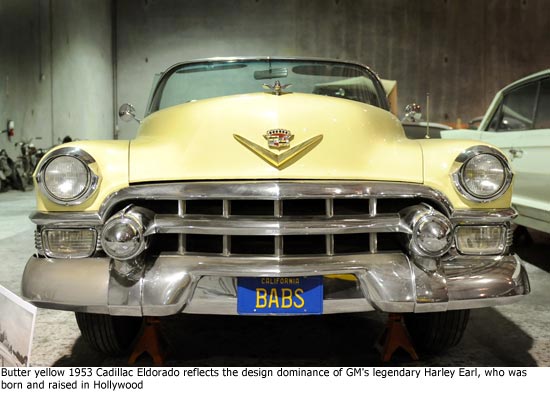
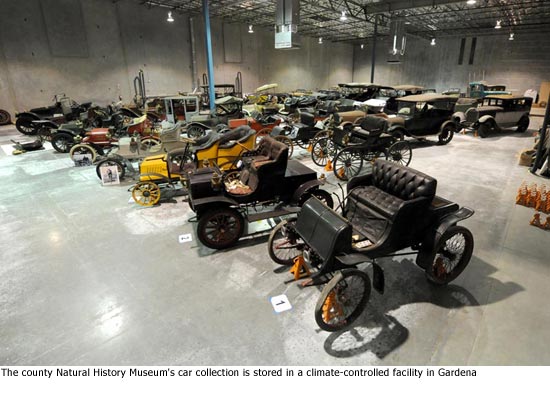
















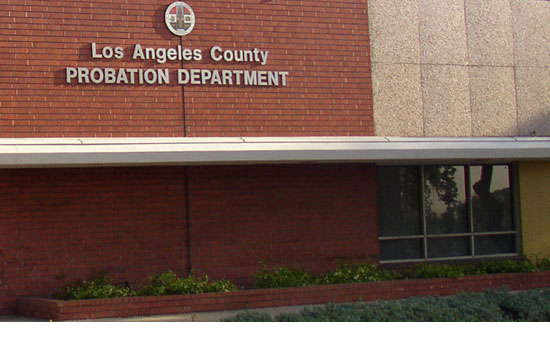





 Check for the latest closure information
Check for the latest closure information








